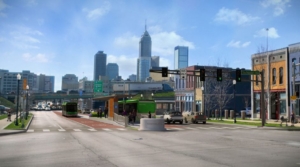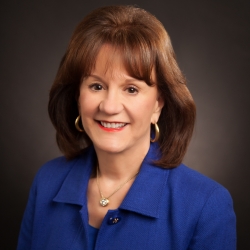Another $20 billion is announced for transit projects in America
Last week, the U.S. Department of Transportation’s Federal Transit Administration (FTA) announced another $20.5 billion in federal funding to support transit projects this year throughout the U.S. The FTA had previously announced $9.9 billion in funding, and this new announcement includes those funds plus quite a bit more. The investment in America’s transit infrastructure will reach $20.5 billion by 2024, making it the largest investment to date. The funding supports projects that improve public transportation, such as upgrading transit stations, extending and adding service lines and improving accessibility.
The Alameda County Transportation Commission in California has announced a $133 million multimodal project that will produce a regional trail connecting transit networks to the cities of Oakland, San Leandro and Hayward. The objective is to provide public transit options to local schools and downtown areas. The project will expand cycling and pedestrian networks around the Bay Area Rapid Transit (BART) line, backed by a $30 million funding award.
The 30-mile bicycle and pedestrian greenway trail will connect seven local stations from Oakland to San Leandro. The greenway area to be constructed will have wide pathways, intersections with improved crosswalks and crossing signals, accessibility features, landscaping and new lighting. Construction on the first phase of the project (connecting Oakland to San Leandro) will begin in 2025.

Photo: Rendering of the IndyGo Blue Line – Southeastern Station. Courtesy of IndyGo.
In Indiana, the Indianapolis Public Transit Corporation, known as IndyGo, is in the design stages of a project to add a bus line. This project represents the third phase of its bus rapid transit system expansion, and the total cost of the project has been placed at $371 million. Planning documents outline a route along Washington Street between Cumberland and the airport. Thirty new stations within 24 miles will be added. The effort will expand access to major hubs that include the airport, the downtown area and the Indianapolis Zoo. This rapid transit system expansion is expected to reduce transit travel time by 30%. The Blue Line project is in its final design phase, which will be completed in 2024, and construction will begin in 2025.
In March of this year, the Port Authority of New York and New Jersey approved a $160 million project to add an entry point to the Newark Liberty International Airport (EWR) Rail Station. The project will include construction of a facility, expansion of the existing pedestrian bridge connecting to the station and construction of a plaza to host a drop-off location for buses and cars. The station will be accessible to pedestrians and cyclists.
The new facility will be about 16,000 square feet and include elevators and escalators between the bridge and ground level to meet ADA standards. It will also have displays for arrival and departure information. The pedestrian bridge will be expanded to allow access to several public and private transportation options, and the new plaza will serve as a public access point for travelers. The project is currently in the beginning stages of the design phase, and a construction outreach will begin in 2025.
A bus rapid transit (BRT) project is planned for the city of Rochester, Minnesota, at a projected cost of $143 million. The city will add bus service to seven stations along one of the most heavily used corridors in the city. The project will add BRT connections to several transit-oriented developments. Various features, including off-board fare collection, will keep the bus running daily. In fact, bus service is planned for every 5 minutes during peak hours and every 10 minutes during normal hours. This project is in the advanced design phase, with completion scheduled for the middle of 2024. Bidding will take place when that is completed and construction is planned for late 2024.
City leaders in Boston will spend about $44 million redesigning Blue Hill Avenue in the Dorchester neighborhood. The effort will include adding a bus lane for the rapid transit system with changes concentrated along 3 miles of roadway. The project will be designed to reduce commuting times by half. Some will likely see a one-hour reduction. Because this segment of Blue Hill Avenue is notoriously dangerous due to its congestion and chaotic traffic patterns, the redesign will also increase safety for pedestrians and cyclists. Bidding on the project is expected in late 2025, and construction is planned for 2026. The city will invest $18 million, and the project has funding assistance in the form of a $15 million grant from the US Department of Transportation and $11 million from the Massachusetts Bay Transportation Authority.
Another California project will deliver a transit center in San Rafael, California, on the west side of the San Francisco Bay. It has been estimated that the construction of a new transit center in downtown San Rafael will cost between $50 million and $70 million. Due to the existence of rail tracks that obstruct access to the current San Rafael Transit Center, as well as the Golden Gate Bridge and a highway/transportation district, replacing the current transit center with a new one in downtown San Rafael is deemed necessary. The Bridge District, which owns the station, is leading the project in partnership with the City of San Rafael, the public bus agency Transportation Authority of Marin and Sonoma Marin Area Rail Transit (SMART). The project will add bicycle parking, eliminate street crossings for transfers and add public spaces in the area. It is currently in the final design stage, and construction is slated for 2026.
These transit projects are similar to hundreds more that will be launched in 2025 and 2026. Now is the time to gather as much intel as possible about contracting to deliver the projects.

 512-531-3900
512-531-3900 Request More Info
Request More Info
